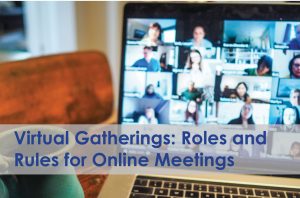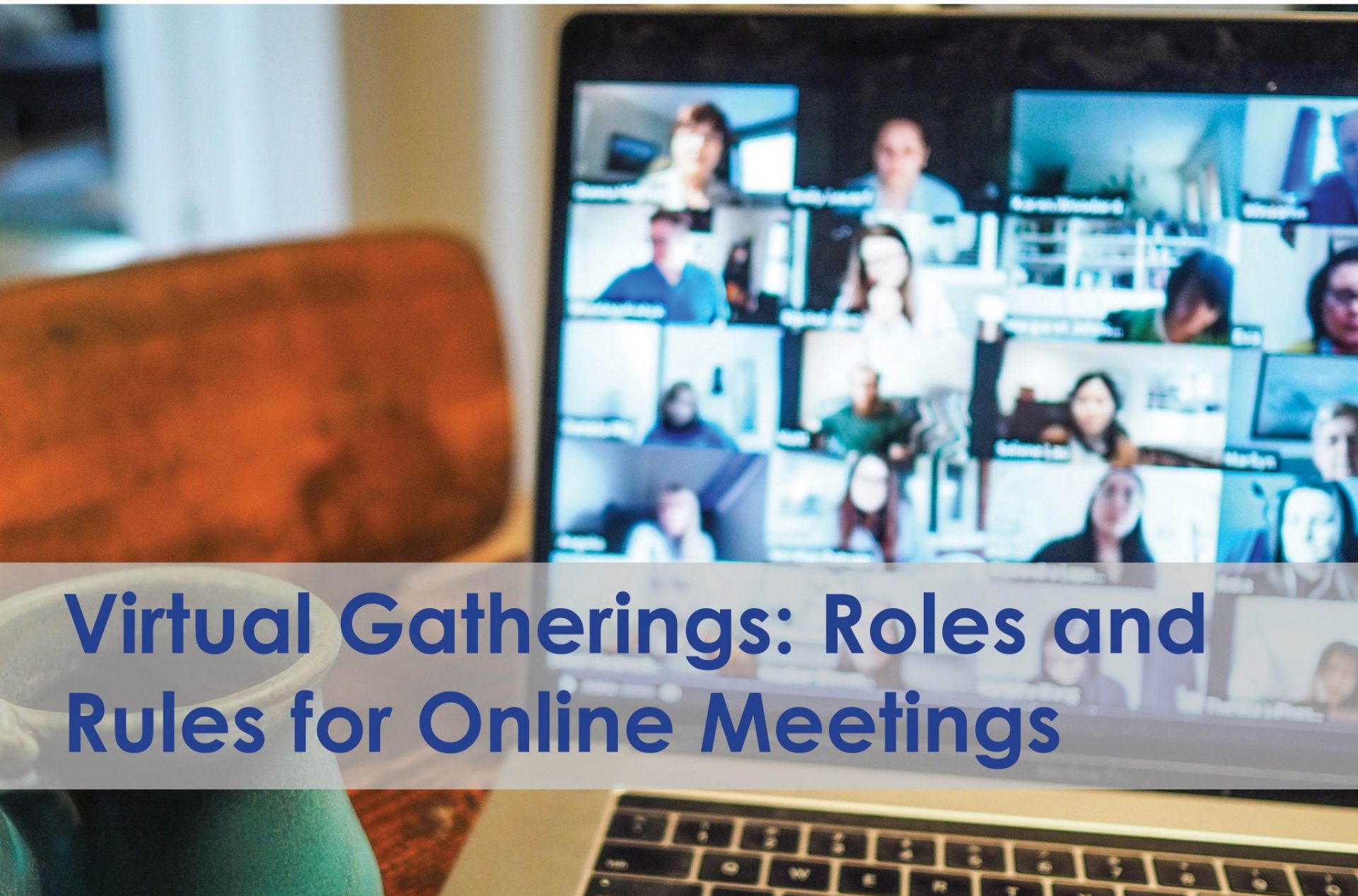
As a leading technology and audio-visual consultant, Vantage has been helping our clients manage online meetings for years. As it becomes the ‘new normal’ in today’s world, there are things that we have learned that we want to share with you to help you plan and manage your online meetings or educational training more productively.
Establish ROLES for your online meeting:
Director – Determine who will lead the pre-production process leading up to your online meeting. This may include establishing the meeting/webinar plan, developing materials and media, and rehearsing the event. The Director will manage the “nuts and bolts” and “behind the scenes” organization for your event and in some cases, they may even be the resource who gives the talk or leads the business meeting. They will need to be familiar enough with online technology so that they can operate the control functions if technical resources are limited.
Producer/Manager/Technical Operator – This is a key role going forward for online meetings and webinars. The Producer manages the business and technology aspects of the event and they work closely with the Director. They will establish the online meeting in your organization’s designated software, working with their Marketing team they will manage invites to participants, as well as follow up with any questions/emails. They may also be responsible for low-level technical operations when logging on and the meeting begins. The Producer may also participate in the webinar or meeting as a Co-Host to support the Director.
Marketing Coordinator – The Marketing Coordinator (MC) will work closely with the Director and the Producer. The MC will work closely with the Director to develop content and put together the presentation that will be given and assist in communicating the message of the webinar to the target audience. Like the Producer and Director, the MC may also participate in the webinar or meeting as the Co-Host.
Host – Having a designated Host makes any webinar go smoother. The Host will begin the meeting with an introduction and also establish ground rules for the meeting or webinar (How long is the meeting? Is there an online chat component? Are participants forcibly muted and is it up to the Director to unmute for questions/discussion?). The Host should also be the one who fields comments and questions using online chat functions. Since the Director is focused on content and delivery, it may be too challenging for them to manage incoming questions and chats effectively. The Host will monitor the chat and answer questions or make note of the comments that spark further discussion points. Often times the Marketing Coordinator or Producer/Manager may perform this role but it is very important that the Host has a strong, clear voice and energy to drive the meeting.
Establish RULES for your online meeting:
Test Audio, Video, and Content – As a best practice and before going live, set up the meeting at least fifteen minutes ahead of schedule and test the audio, video, and content sharing internally with a “test-dummy” participant. Some meetings require two-way communication so it’s important to not only test audio from both sides (near-side participant and far-side participant) but also test the content delivery mechanisms.
Introduce Your Team to the Audience – Describe the roles and responsibilities of each resource assigned to run the meeting. This includes a contact for technical issues that may arise during your meeting.
Set Ground Rules – Clearly describe the intent and timing of the meeting, how the information will flow, how participants can ask questions or comment if there will be polling, and where the information will be made available post-meeting.
Internal Check-Ins – Keep in contact with your team who are driving the meeting using private chat functions. Whether its timekeeping, teeing up content or fielding questions, it’s important that the core presenting team stays connected and on the same track for a successful meeting.
This post was authored by Senior Consultant, Joe Williams, CTS-D. For more information on what we are seeing and how we are helping to manage the ‘new normal’ of webinars, online meetings and teaching in regard to appropriate technology and processes, feel free to contact Joe via email or LinkedIn

